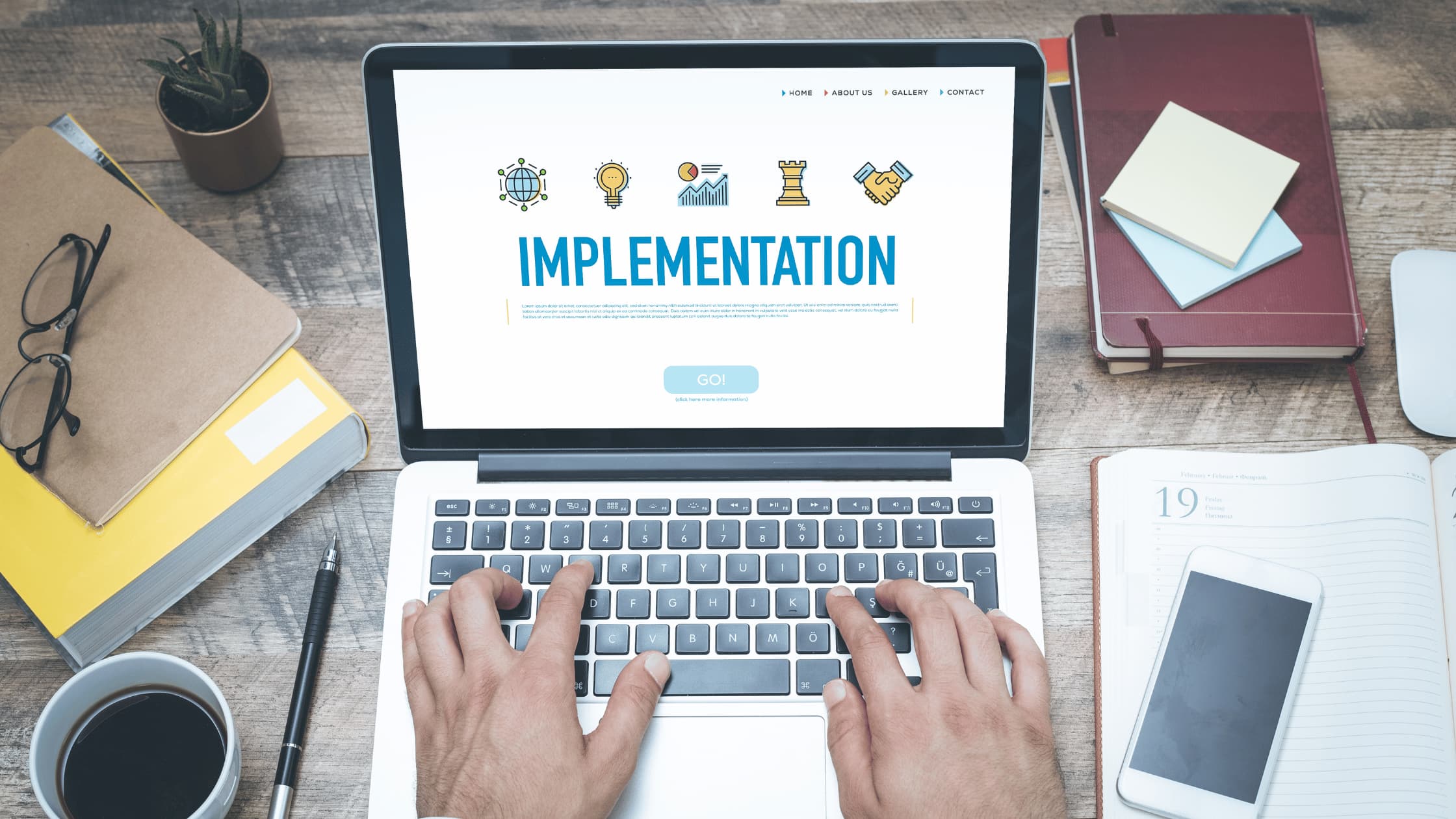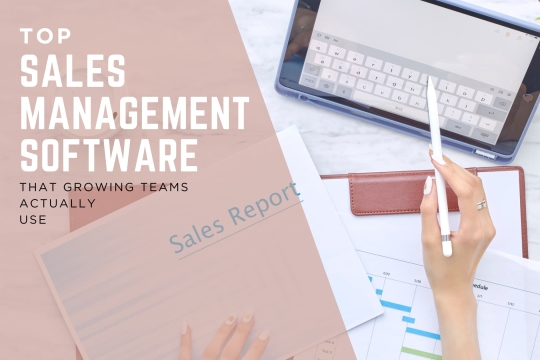How to Effectively Use a CRM to Improve Business Relationships

In this guide, you’ll learn to best use your CRM to strengthen customer relationships, enhance sales performance, and maximize marketing impact—helping you unlock the tool's full potential and drive business growth.
What Are the Basic Functions of a CRM System?
CRM software does store your contacts, but it's more than that. It's built to streamline all kinds of business processes, including sales, marketing, and customer service. A solid CRM pulls together all your customer data, tracks customer interactions, and improves your ability to make more informed decisions faster.
Main Types of CRM Systems
CRMs come in three main types: operational, analytical, and collaborative. Each has its strengths and specializes in a particular area of data management and customer relations.
- Operational CRM — prioritizes automating repetitive tasks, like data entry, email follow-ups, and workflow automation
- Analytical CRM — delivers deeper customer analysis and insights to identify consumer trends, predict behavior, and leverage sales opportunities
- Collaborative CRM — enables information-sharing between departments to make sure the customer experience stays consistent customer across different touchpoints
With a CRM, sales, marketing, and service teams can all work from the same centralized database, improving customer satisfaction and loyalty. And today's CRM platforms pull in everything—emails, phone calls, website interactions, social media interactions—to give you a comprehensive picture of every customer's journey.
Setting Up Your CRM for Success
Centralize and Organize Customer Data
By consolidating customer data into a single centralized database, you can remove informational silos between sales, marketing, and service teams and introduce a transparent, efficient workflow.
A CRM system should capture:
- Contact information — names, addresses, phone numbers, and email addresses
- Customer accounts — business names, locations, and primary decision-makers
- Historical interactions — notes from phone calls, meeting summaries, and email threads
- Purchase history — orders, invoices, and related accounting software data
- Customer preferences — product interests, preferred communication channels, and buying patterns
But no matter what it captures, a CRM is only as strong as the teams behind it. Across teams, everyone should adopt consistent data entry practices. Otherwise, issues like incomplete records might lead to missed opportunities, while duplicate records could confuse sales reps and marketing staff.
One way to achieve consistency is to leverage modern CRMs that offer automated data entry—features like automatic email capture, web form integration, and workflow automation that handle data entry for you.
Maintaining Data Quality Standards
Clean, accurate data is the foundation of an effective CRM platform. Without it, your marketing, sales, and service efforts suffer. To maintain high-quality business data:
- Perform regular database audits to remove duplicates.
- Standardize naming conventions for companies, contacts, and job titles to ensure consistency and clarity.
- Update old records, especially for customer accounts that have changed ownership or location.
- Ensure compliance with data privacy laws when storing customer information.
- Use built-in reporting tools to identify incomplete fields or inconsistent entries.
Assign a team member to oversee CRM data hygiene, making sure all entered information is accurately reported, supports sales pipeline visibility, and automates key marketing processes.
Strategic Integration with Business Tools

To maximize value, your CRM solution should integrate seamlessly with other software your business relies on:
- Accounting software — make sure sales data flows straight into billing and invoicing systems
- Service management tools — link customer service tickets to sales records for a 360° view
- Email marketing platforms — automate email sends based on CRM triggers
- Social media tools — track engagement and leads generated from social channels
- AI-powered CRM features — use machine learning to score leads, suggest next steps, or predict churn
Choosing cloud-based CRM options ensures that updates occur in real time and that integrations remain synced across devices. That's especially valuable for businesses that scale quickly, since it enables your CRM to grow in tandem with your operations.
- New to CRMs and don’t know where to start?
- Stuck with a broken setup that someone else botched?
- Tried the DIY route but know it’s not working the way it should?
At PointsPeak, we help businesses:
- Choose the right CRM for their needs
- Clean up and rebuild messy, underperforming setups
- Fix automation issues that cost you leads and sales
- Build scalable, conversion-focused systems that grow with you
Core CRM Usage for Relationship Building
Mapping and Tracking Your Customer's Journey
Understanding the entire customer lifecycle is crucial to communicating the right message at the right moment—and a CRM helps you map the journey from initial contact through nurturing, purchase, and post-sale engagement.
These are the key stages of the customer journey:
- Lead Generation — When you capture details from potential customers through ads, events, or referrals
- Qualification — When you determine if a lead matches your ideal customer profiles based on needs, budget, and authority
- Nurturing — When you send targeted content or follow-ups to keep leads engaged
- Conversion — When a prospect turns into a paying customer
- Retention and Loyalty — When you continue to add value so customers come back
With the sales pipeline view that CRMs provide, you can track the position of every deal in the sales funnel. Sales representatives can then quickly identify which prospects are ready for a follow-up and which ones need more time. Plus, automated reminders can prevent your leads from going cold.
Beyond the sales process, tracking customer touchpoints—email opens, website visits, social media engagement—helps you tailor your communication more effectively. This enables personalized marketing messages that reflect each stage of the journey, forging stronger customer relationships.
Enhancing Sales Management and Forecasting
For any sales team, visibility into the pipeline is critical. A CRM's sales management features let you track not only the quantity of deals but also their quality and likelihood of closure.
With a CRM platform, you can:
- Assign deals to specific sales reps for accountability
- Track the sales cycle length to identify bottlenecks
- Use probability scoring to estimate close rates
- Compare past and current sales trends to forecast growth
Analytical CRM capabilities take forecasting even further, spotting patterns in how customers behave and how your sales have performed over time. This lets managers identify seasonal fluctuations, high-performing product lines, or territories with the most potential.
These insights guide resource allocation, so marketing budgets, sales opportunities, and inventory levels all align with projected demand. Sales automation features, like automated quote generation and proposal reminders, free your team to focus on building profitable relationships.
Improving Marketing Efforts with CRM Insights

A CRM is more than a sales tool—it's a marketing powerhouse. By centralizing CRM data, you can segment your audience based on demographics, purchase history, or engagement level.
Segmentation types to consider:
- Behavioral segmentation — Group customers by actions, like clicks, downloads, or purchase frequency.
- Demographic segmentation — Sort by location, industry, or company size.
- Lifecycle segmentation — Target contacts based on where they are in the customer journey.
Armed with this data, a marketing team can deliver targeted and timely marketing campaigns. For example, they might send special offers to current customers nearing a contract renewal, or re-engagement emails to prospects who haven't interacted in months.
By tracking open rates, click-throughs, and conversions, you can directly measure the effectiveness of your marketing efforts and adjust your campaigns for better results. These insights also feed back into marketing automation, ensuring your outreach is both efficient and effective.
Leveraging CRM for Customer Service Excellence
An effective customer relationship management strategy doesn't end at the sale. It continues into service and support. A collaborative CRM empowers your service team to see every previous customer interaction, from quotes and invoices to support tickets and phone calls, the benefits being faster and more personalized problem resolution.
Integration with service management platforms lets you automatically log service tickets and link them to customer accounts. Workflow automation can route tickets to the right team member, send acknowledgment emails, and follow up for feedback after the issue gets resolved.
This is where customer satisfaction pays off. When service teams have complete context surrounding customer relationships, they can provide more informed, empathetic support. And that's exactly what strengthens long-term loyalty, building the kind of trust that keeps customers coming back.
Advanced CRM Features and Automation
Using AI and Automation for Efficiency
Many CRMs now come with AI-powered features and automation that can significantly simplify complex or repetitive tasks. Making use of these is a great way to take work off your teams' plates, so they can focus more on strategy and customer engagement.
Key AI and automation features include:
- Lead Scoring — Ranking prospects based on their likelihood to buy
- Predictive Analytics — Anticipating sales outcomes based on past data
- Automated Workflows — Triggering follow-up emails or task assignments when certain conditions are met
- Natural Language Processing (NLP) — Analyzing customer interactions in emails or chat transcripts to gauge sentiment
These tools help marketing managers and sales reps spend less time on manual data entry and more time on building stronger customer relationships. But automation should support—not replace—human judgment. Although AI can suggest the best time to reach out, sales professionals still need to adapt their approach based on real-time customer feedback.
Workflow Automation Best Practices
Workflow automation in a CRM system can save hours of repetitive work while ensuring important customer interactions never fall through the cracks. By setting up automated processes, your team can focus on building stronger customer relationships instead of chasing manual tasks.
Practical workflow automation ideas:
- Lead Assignment Rules — Automatically route new leads to the right sales reps based on territory, product interest, or deal size.
- Follow-Up Reminders — Trigger alerts when no activity has occurred on a lead or a customer account for a set number of days.
- Onboarding Sequences — Send a timed series of welcome emails to new, current, and potential customers.
- Service Ticket Routing — Direct incoming service requests to the correct team member in service management.
- Contract Renewal Notifications — Alert account managers when a customer's contract or subscription is close to expiring.
Best practice: Start with a few high-impact workflows that directly support your sales process or customer journey. Review automation rules regularly to make sure they align with current business processes and don't unintentionally create unnecessary steps.
Well-designed workflows can address every step in the customer lifecycle with speed and accuracy, not only improving efficiency but also enhancing the customer experience.
Measuring and Improving Customer Loyalty
Keeping existing customers is often more profitable than scrambling to get new ones. With a CRM, you can more easily track loyalty metrics and identify signals when a relationship might be at risk.
Key metrics to monitor include:
- Repeat Purchase Rate — How often customers return
- Customer Lifetime Value (CLV) — The total value of a customer over their relationship with your company
- Churn Rate — The percentage of customers who stop purchasing over a period of time
- Engagement Scores — Based on email opens, website visits, and event participation
With this data, you can set up alerts for at-risk accounts, create targeted retention campaigns, and offer incentives that keep customers engaged. Over time, this approach strengthens profitable relationships and builds long-term customer loyalty.
If you’re thinking, “There’s probably a better way to do this…” — you’re probably right.
Implementation and Best Practices

Common CRM Mistakes to Avoid
Even with the best customer relationship management software, poor habits and oversight can hamper your results. Recognize these common mistakes early to help you maximize the benefits of your investment.
1. Inconsistent Data Entry
If team members fail to log customer interactions, update customer accounts, or standardize information, your centralized database quickly becomes unreliable.
Avoid it by: Establishing clear data entry guidelines and using automated data entry features to capture information from emails, forms, and calls without manual entry.
2. Overcomplicating the CRM System
Stuffing your CRM with unnecessary fields, unused integrations, and irrelevant reports can overwhelm sales reps and marketing managers.
Avoid it by: Configuring the system to support your specific business processes, then adding advanced features gradually as your business grows.
3. Ignoring Reporting Tools
A CRM's reporting tools can reveal sales trends, customer preferences, and the performance of marketing campaigns. Many businesses underuse them.
Avoid it by: Scheduling regular reviews of CRM reports to make informed decisions and identify new sales opportunities.
4. Lack of Training
Even the best CRM software is ineffective if your team doesn't know how to use it properly.
Avoid it by: Investing in ongoing training and encouraging team members to explore new features.
Training Your Team for CRM Success
All these best practices won't amount to much if your teams open the CRM, and—not familiar with its features—get stuck or overwhelmed. A CRM can only improve customer relationships when your teams actually adopt it and can use it with confidence.
Key steps for effective CRM training:
- Onboarding Sessions: When introducing the CRM, walk through essential features like sales pipeline management, workflow automation, and logging customer data.
- Role-Specific Training: Teach sales reps, marketers, and service agents the functions most relevant to their day-to-day responsibilities.
- Regular Refreshers: As new features roll out—especially in cloud-based CRM systems—hold quick update sessions.
- Best Practices Library: Create a shared resource with guides for entering data, using CRM tools, and analyzing reports.
- Performance Monitoring: Use CRM adoption metrics to identify users who might need additional support.
When teams know their CRM platform inside and out, they're more likely to keep records up to date, follow the sales process efficiently, and improve the overall customer experience.
Choosing the Right CRM Platform
Factors to consider:
- Business Size and Growth Plans — Medium-sized businesses often prioritize scalability, while small businesses tend to focus on affordability and ease of use.
- Deployment Type — Cloud-based CRM systems allow remote access and easy updates, while on-premise systems may offer more control over customer data storage.
- Integration Needs — Check compatibility with accounting software, service management tools, and marketing platforms.
- Automation and AI Capabilities — An AI-powered CRM can help identify trends, predict customer behavior, and optimize marketing efforts.
- Customization Options — Ensure the CRM can be tailored to your sales cycle, marketing campaigns, and industry-specific workflows.
- User-Friendliness — Even advanced CRM technology should be intuitive enough for quick adoption.
Tip: Before committing, take advantage of free trials or demos to see how well the system supports your entire customer lifecycle management.
Need Expert Help Implementing Your CRM and Automation?
At PointsPeak Marketing, we don't just teach you how to effectively use a CRM—we help you set it up, integrate it, and optimize it for real business results.
Our team specializes in:
- Zapier integrations to connect your tools and automate business processes
- Full CRM setup and management for platforms like HubSpot, Keap, ActiveCampaign, Pipedrive, and Pulse
- GHL CRM and automation strategy for agencies and small businesses
- Advanced marketing automation to improve the customer journey and boost sales growth
- Optimized email marketing campaigns that convert current and potential customers into loyal clients
Whether you're starting from scratch or looking to get more value from your CRM system, our CRM experts can help you design a strategy, implement automation, and make sure your team knows how to use it effectively. Contact us today.
Conclusion
Learning how to effectively use a CRM is about more than software. It's about building processes that put the customer at the center of every decision. From storing valuable customer information to automating follow-ups and tracking loyalty, a well-implemented CRM supports business growth at every stage.
By focusing on accurate data, team training, smart integrations, and continuous improvement, you can unlock the full potential of customer relationship management and foster stronger, more profitable relationships with both current and potential customers.
Start by evaluating your current CRM processes. Look out for areas where CRM software could improve your efficiency, consistency, or customer satisfaction. Then focus on one area at a time to ensure successful implementation and user adoption before expanding to additional features and capabilities.
FAQs
A CRM system is designed to store and organize customer data, track customer interactions, and support sales, marketing, and service teams in managing the entire customer lifecycle. Its ultimate goal is to enhance customer relationships and drive business growth through improved organization and enhanced insights.
Yes. Many CRM platforms integrate with accounting software, email marketing tools, marketing automation platforms, and service management systems. Zapier integrations can connect your CRM with hundreds of other tools, creating workflows that span across your business operations.
CRM software can segment your audience based on customer behavior, demographics, or purchase history, which lets you create more personalized marketing campaigns. It also tracks campaign performance, so it's easier to refine your marketing messages for improved engagement and higher conversion rates.
A cloud-based CRM offers remote access, real-time updates, and easier integrations with other tools. On-premise systems might be better for companies that require more control over business data storage and security, but cloud solutions are generally more flexible and cost-effective for most businesses.
For best results, update your CRM data daily or at least weekly. Regular updates help you keep records accurate, which is critical for effective sales management, reporting, and workflow automation. Set up automated data capture where possible to reduce manual entry requirements.
The most common mistake is inadequate user training and adoption. Even the most powerful CRM software won't improve relationships if your team doesn't use it consistently. Invest in comprehensive training and ensure the system is configured to support your actual business processes, rather than forcing teams to adapt to overly complex workflows.


